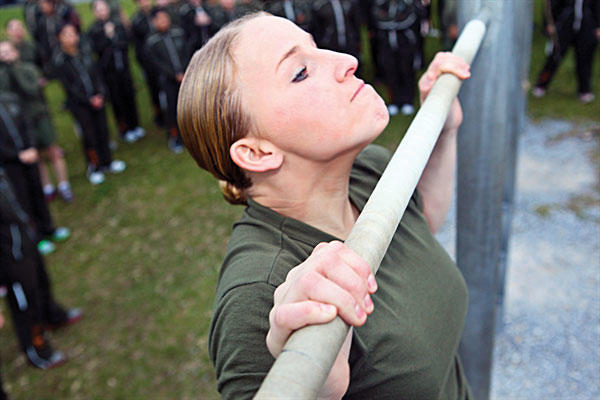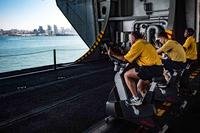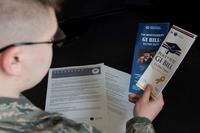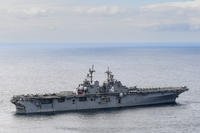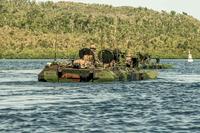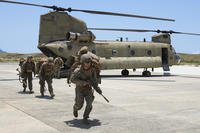The Marine Corps may have to change its physical standards in order to put females in positions to one day lead infantry platoons in combat.
Both the Marine Corps and the Army continue to wrestle with the mandate that former Defense Secretary Leon Panetta issued in January, directing the U.S. military to open hundreds of combat-arms jobs that have been closed to female servicemembers.
So far, the Marines have been out ahead.
The service has opened up infantry training to female officers and enlisted Marines as part of an effort to gather data on how females and males compare when performing infantry and other combat-arms-related skills, and how those findings relate to current male and female physical fitness standards.
The effort is scheduled to run until fall of 2014, but the results so far have drawn attention.
On Sept. 24, 15 enlisted female Marines began training with Delta Company at the Infantry Training Battalion course. Four of the initial volunteers remain in the course and are approaching the Nov. 21 graduation date.
So far, a total of 39 females have volunteered for the training and 23 remain, spread out over three classes. To qualify, the females had to pass the same physical screening as male Marines. At a minimum, they had to be able to do three pull-ups, 50 crunches in two minutes and run 3 miles in 28 minutes on the Physical Fitness Test.
Female Marine officers attempting to enter the Infantry Officer Course are not expected to meet the same physical fitness screening standards as male Marines, but they do have to match male performance in the course.
IOC is a demanding 13-week school that historically averages a 25-percent attrition rate. The first day puts students through a grueling Combat Endurance Test that consists of physically and academically challenging tasks that last all day, said Marine Corps spokeswoman Capt. Maureen Krebs. Marines wear combat gear, perform various physical tasks and answer tactical questions while negotiating a land-navigation course, she said.
All IOC candidates are pre-screened before they even show up for the course. Like their male counterparts, females need to have a top-level score on the PFT -- but under the Marine Corps female standard, not the male one, which does not require pull-ups.
Pull-ups are required on the Male PFT, and the standard requires 20 for a max score.
The Marine Corps began experimenting with women performing pull-ups during the PFT about a year ago, but it's not mandatory. And women who do choose to do pull-ups only have to perform eight for a max score.
"It doesn’t set them up for success and actually puts them at risk for injury," said one Marine official with a background in physical fitness training. "A lot of the tasks on that course require students to lift their own body weight plus their equipment."
So far, the results have not been promising. Nine of the 10 females that volunteered out of The Basic Course failed to make it through the first day of IOC. The remaining female volunteer dropped because of an injury from the course a week later.
The Marine Corps will continue to allow female Marines to go through IOC and ITB until the research phase ends next fall. From there, the data will be compiled into a recommendation to Defense Secretary Chuck Hagel on how the Corps intends to open up certain combat-arms jobs to women by Jan. 1, 2016.
The Corps has also been evaluating the physically-demanded tasks required for combat-arms related jobs in about 335 Military Occupation Specialties.
The service conducted "proxy tests" this summer, involving 400 females and 400 males at Quantico Marine Base, Va., and at Camp Lejeune, N.C. The tests looked at tasks such as "lifting a tank round and loading it," Krebs said.
"The data from the performance on those proxy tests will be correlated against the performance of the Marines doing physical fitness and combat fitness test events," Krebs said.
"And we will kind of see … if a Marine gets a 300 on the PFT and CFT; how well they do on the MOS tasks. So we are looking at that to see … whether or not these physical standards are applicable to these MOSs.
"Depending on what the data says, and what it shows, it will decide whether or not any of the standards for the MOSs need to change."
It's unclear if the Marine Corps will decide to require males and females to perform the same PFT standards, but officials said that the service has no plans to lower the physical requirements of Marine infantry training.
"Those physically-demanding tasks are performance-based standards that all Marines in that MOS must be able to perform," Krebs said. "So whether you are male or whether you are female, that's the standard and that is what we are going to hold it to."
Correction: An earlier version of this article incorrectly stated the Marine Corps was considering lowering the standards for women entering infantry training.
